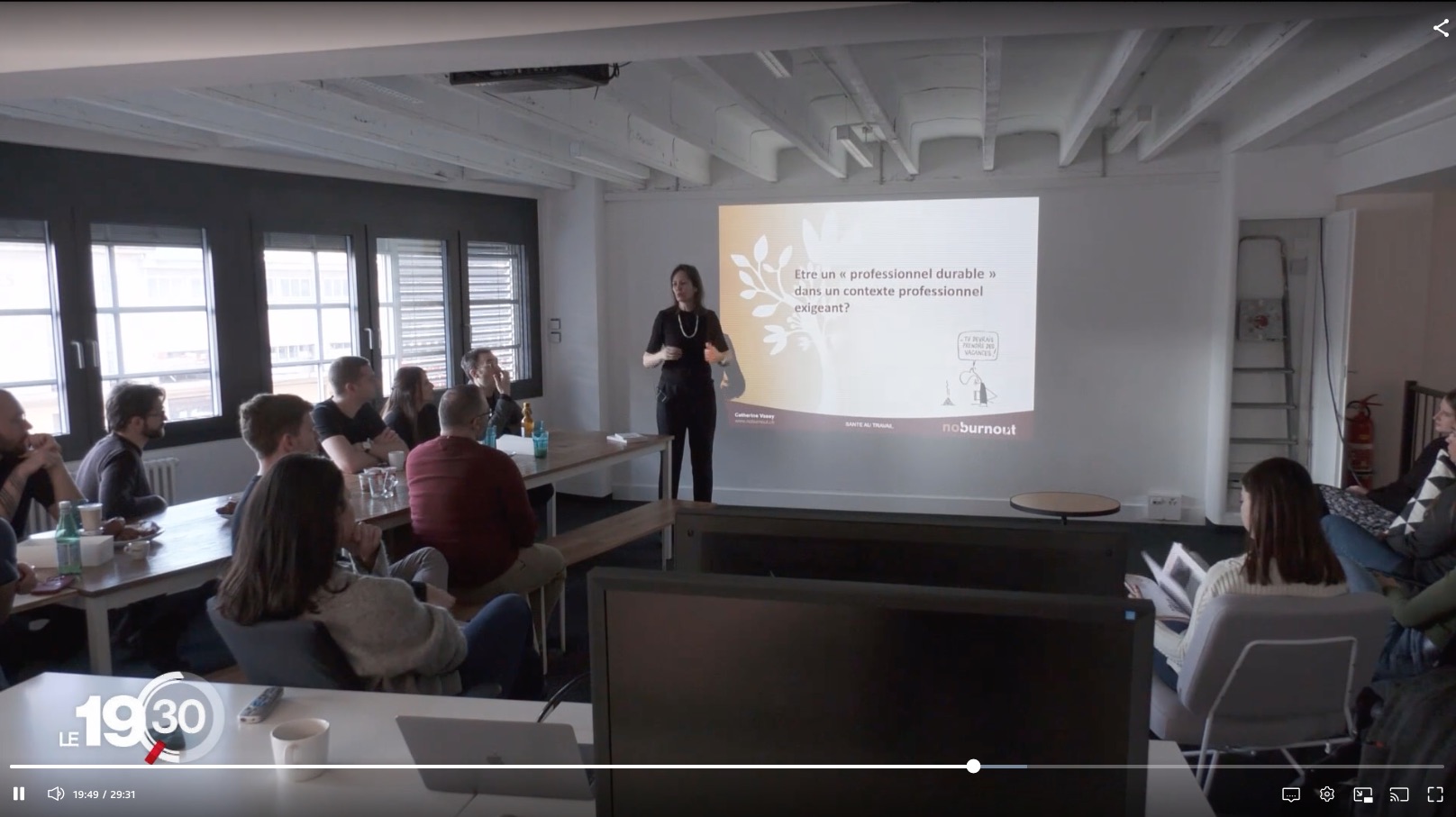Mental health is important! And at Antistatique, we're well aware of that. But what can be done to ensure that every employee feels at their best in a working environment and the stress inherent in it?
"In Switzerland, it is estimated that one person in five will experience significant stress as a result of their professional activity during their lifetime". (via an article from Valais Hospital). This stress can sometimes be so great that it leads to burnout. So we need to be alert to the early warning signs.
But being alert doesn't mean you're immune. And rather than preventing stress, we need to learn how to react better to the difficulties that some people may experience.
Expert advice!
To learn more about the issue, we called in a burnout specialist, psychologist and gestalt therapist Catherine Vasey. She came to the agency at the end of January to give us a talk on mental health in the workplace and burnout in particular. The talk was entitled "Being a 'sustainable professional' in a demanding professional context? ". We learned so many interesting things… Here are the most memorable for us:
- Recognising the warning signs of burnout (tension fatigue, irritability, demotivation, saturation, ruminations, sleep problems, progressive isolation, etc.)
- Evaluating several testimonials. Learning how to classify warning signs and symptoms, ranging from a "normal" situation, to one that requires vigilance, to a highly serious situation that requires immediate help.
- The difference between "good stress" and "bad stress", between acute stress and chronic stress.
- Take stock of your professional environment by identifying stress and wear factors, as well as resources. The aim is to see if the right balance is being struck.
- The importance of active recovery to recharge batteries and revitalise.
- A little survival kit in the event of imbalance (recharging your batteries, preserving your sleep, controlling your ruminations, etc.).

A self-assessment tool
During her talk, Ms Vasey suggested that we do a self-assessment of our professional environment. It's a personal and individual assessment that we all liked, because it allows us to take stock quite quickly.
- On the one hand, we have to identify the stress and wear factors we encounter at work, and our ability to do something about them (a score from 1, to indicate powerlessness in the face of the problem, to 10, which means full power to change things).
Examples of wear and tear: Conflicts within the team, lack of recognition from customers or colleagues, work overload, frequent interruptions, etc.
- On the other hand, we need to identify the resources, the things that make us feel good in our work.
Examples of resources: interesting tasks, learning new things, a good team atmosphere, satisfied customers, feeling heard and supported…
What's next?
It is interesting to note that everyone is the main actor in their own mental health. While those around us, and therefore our colleagues in the workplace, can alert us to our condition and perhaps help us to become aware of it, only the person concerned can take the necessary measures once they have accepted that they are not well. The employer's role is to listen, to help the person to put in place the measures he or she has chosen and sometimes, as a last resort, to simply say stop.
To this end, we have long had a mentoring system in place for employees: a colleague chosen by the employee, whose role includes ensuring the employee's well-being and listening to him or her. Having a dedicated HR manager at Antistatique has given us many tools to improve employee well-being.
Following Mrs Vasey's speech, we also decided to add a reminder to our internal documentation. A point on how to behave when you think a colleague is under intense stress. What you can do and what you shouldn't do.
The self-assessment tool is also available to everyone. We have decided to encourage our staff to use it as part of their bi-annual appraisal. The result remains personal, but it can help them become aware of an imbalance and decide on this basis to share certain elements so that we can take measures to help them find harmony at work.
If you're as interested in this subject as we are, we invite you to visit https://www.noburnout.ch.
Take care of yourself! ❤️